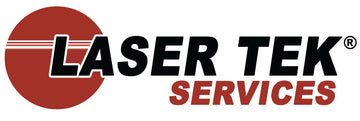More than anything, a laser printers maximum duty cycle is likely considered as a mere marketing ploy used by printer manufacturers to sell the product. But in reality, duty cycle refers to the workload (in terms of maximum number of pages) the equipment can handle before unit servicing is required. In analogy, this works like the average car that needs an oil change every 1,000 or so miles to protect the moving gears from damage due to the already used and dirty oil. In effect, the car’s maintenance will be dictated by the number of miles traveled and not by time as the car could have been left unused in the garage for specific periods. Laser printers follow the same maintenance frequency – just like the HP 1100 that has a specified duty cycle of 3,000 pages, to therefore need a new maintenance kit – not monthly, but after the rated capacity is breached.
he average maintenance servicing required for a laser printer is typically at least every 3 months; whether the the printed capacity has been reached or not. So in the case of the HP 1100 and its duty cycle of 3,000 pages, maintenance is required after the unit is subjected to a workload of 45 pages (daily printout) or 1,000 pages (printed monthly) for offices operating a 22 working day month. However if the printing load is really low, it may take a year to breach the 3,000 print mark. In this case, maintenance can be performed annually.
Based on the facts supplied, it is therefore advisable to acquire a laser printer that suits your printing frequency and volume. Remember that printers have only a 5 year life cycle in line with the sensitive components that decline in function following the mandated period; particularly the OPC Drum photosensitive properties or the mechanical rollers that deteriorate even when not in use. Therefore, for a printer rated 10,000 pages monthly for its duty cycle where the user can only print say 1,000 pages monthly, the printer’s capacity is obviously underutilized as well as too large and expensive for the need. Know that the printer’s duty cycle is commensurate to its cost. That is just like buying an ice machine with a 200 kg capacity for a 20 kg ice requirement. In the end, the user loses the laser printer’s competitive edge as parts deteriorate due to age (not because of use) and actual replacement of the printer’s sensitive component must be implemented to sustain the printer.
In the case of the HP 1100 toner cartridge(C4092A), the rated capacity is only 2,500 pages at 5% coverage and is 20% less than the printers duty cycle. Refills using a compatible toner refill kit can be administered on an empty OEM cartridge that delivers similar print quality and yield, but is awfully low at only $6.95 compared to the OEM at $65. The cost difference is substantial enough at around $58 and this could pay part for the maintenance kit needed by the printer.
Lesson learned: pick the laser printer with a duty cycle commensurate to the user’s printing requirement.





